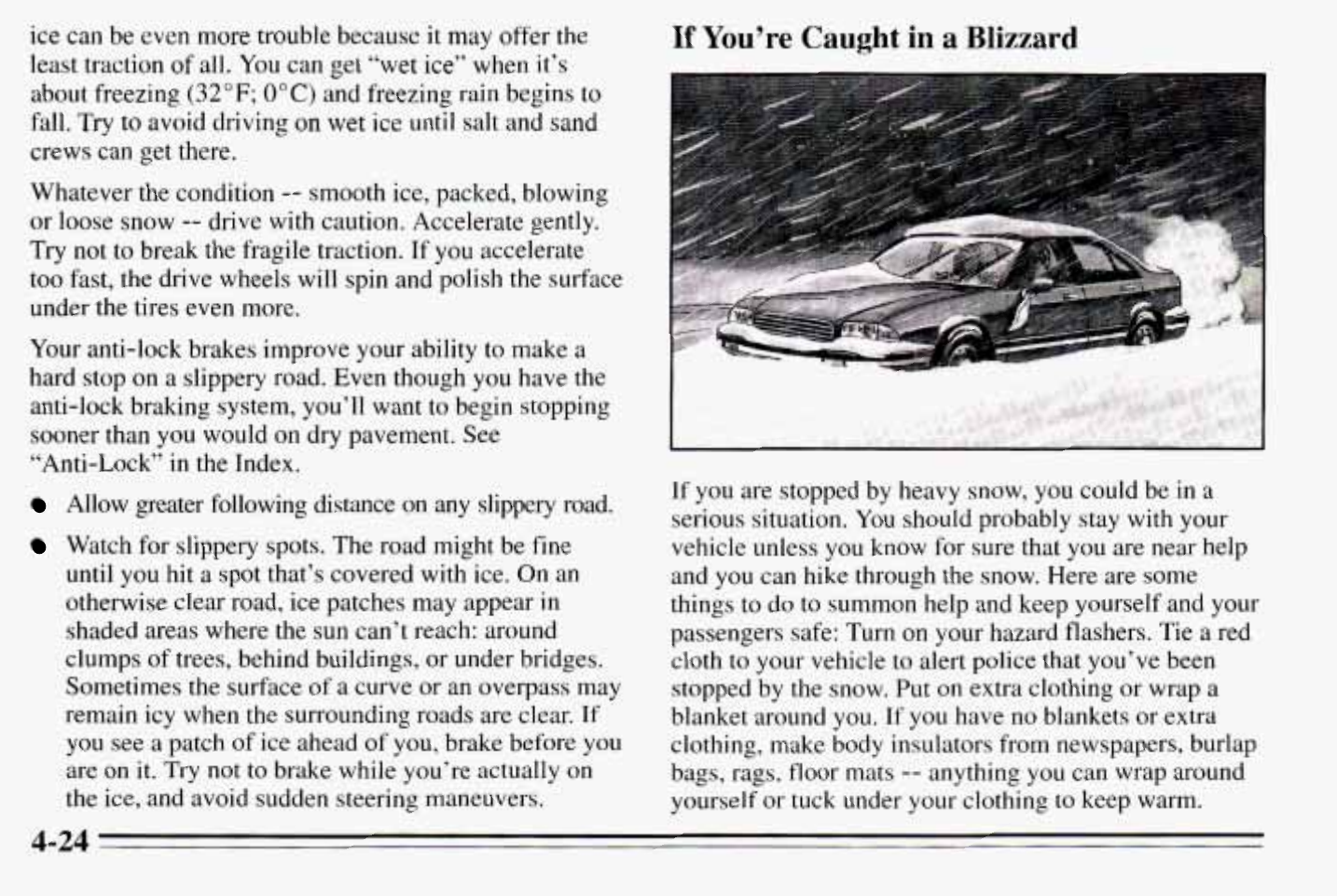
ice can be even more trouble because it may offer the
least traction
of
all. You can get “wet ice” when it’s
about freezing
(32°F;
0”
C)
and freezing rain begins to
fall.
Try
to avoid driving
on
wet ice until salt and
sand
crews can get there.
Whatever the condition
--
smooth ice, packed, blowing
or loose snow
--
drive with caution. Accelerate gently.
Try
not
to
break the fragile traction.
If
you
accelerate
too fast, the drive wheels will spin and polish the surface
under
the
tires even more.
Your anti-lock brakes improve your ability to make a
hard stop on a slippery road.
Even
though
you
have the
anti-lock braking system, you’ll want to begin stopping
sooner than
you
would on dry pavement. See
“Anti-Lock”
in
the Index.
Allow greater following distance on any slippery road.
Watch for slippery spots. The road might be fine
until you
hit
a spot that’s covered with ice. On an
otherwise clear road, ice patches may appear in
shaded areas where the sun can’t reach: around
clumps
of
trees, behind buildings, or under bridges.
Sometimes the surface
of
a curve
or
an overpass may
remain icy when the surrounding roads are clear.
If
you
see a patch
of
ice ahead of you, brake before you
are
on
it. Try not
to
brake while you’re actually on
the ice, and avoid sudden steering maneuvers.
If
You’re
Caught
in
a
Blizzard
If you are stopped by heavy snow, you could be in
a
serious situation. You should probably stay with your
vehicle unless
you
know for sure that you are near help
and you can hike through
the
snow. Here are some
things to
do
to summon help and keep yourself and your
passengers safe: Turn on your hazard flashers. Tie a red
cloth to your vehicle
to
alert police that you’ve been
stopped
by
the
snow.
Put
on
extra clothing or wrap a
blanket around
you.
If
you
have no blankets or extra
clothing, make body insulators from newspapers, burlap
bags, rags, floor mats
--
anything you can wrap around
yourself or tuck under your clothing to keep warm.


















